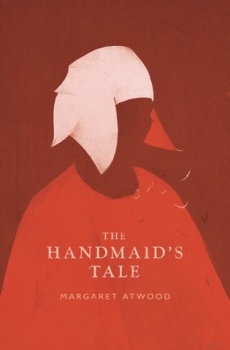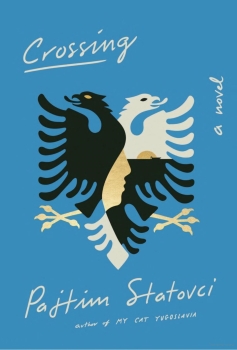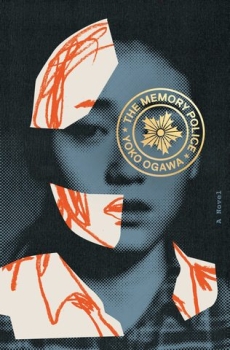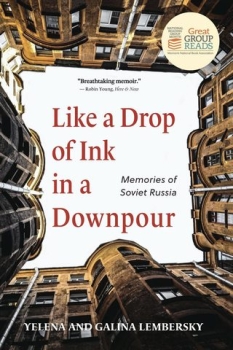The Handmaid’s Tale by Margaret Atwood
Margaret Atwood's 1985 novel, The Handmaid's Tale, describes a futuristic dystopia where a patriarchal and totalitarian regime, the Republic of Gilead, has supplanted the United States government. Offred, the protagonist and narrator, belongs to a class of women called Handmaids. These women are forcibly tasked with bearing children for the ruling elite, known as the Commanders.
Within the narrative, Atwood explores the themes of female disempowerment in a patriarchal society, the erosion of women's autonomy and identity, the subjugation of reproductive rights, and the myriad ways in which women strive to assert their individuality and reclaim their independence. The title itself draws parallels to Geoffrey Chaucer's The Canterbury Tales, a collection of interconnected stories, while also nodding to the tradition of fairy tales where the central character narrates her own journey.
The book has been adapted into a 1990 film, a 2000 opera, a 2017 television series, and other media. An ebook version was published by Houghton Mifflin Harcourt in 1986. A sequel novel, The Testaments, was published in 2019.
The book club is hosted at the Tempe Public Library, convened by Keith Brown. [email protected]. For the latest book club meeting register at: tempepubliclibrary.org and click Event Calendar.
Themes and influences
History: Atwood calls Tale a work of “speculative fiction” rather than science fiction. Everything in the novel, she contends (in her 2017 reflection on the book’s enduring significance), is inspired by something that has actually happened: for example, Gilead isn’t imaginary, but mirrors 17th century New England Puritan structure and customs, as well as dictatorships seen in different eras across the globe.
Dystopian literature: Atwood has said she modeled Tale on dystopian literature that gripped her as a youth, including George Orwell’s 1984, and Aldous Huxley’s Brave New World. In a LitHub essay she wrote, “Once you’ve been intrigued by a literary form, you always have a secret yen to write an example of it yourself.”
Gender: Gilead is a hierarchical society based on gender. Women cannot use money or read books; their clothing is prescribed by their role. Serena Joy, despite her status as a Commander’s wife, finds herself trapped in the home role that, as a public figure, she had advocated for pre-Gilead. Aunts, Marthas, Econowives and “Jezebels” all form a system built around controlling the unique power (to bear children) of Handmaids: and all treat the Handmaids with envy or resentment. The book also comments on the negative effects of this system on men as well, limiting the ways they can perceive or interact with women. The story offers a critique of patriarchy; but radical feminism (as represented by Offred’s mother) is not off the hook, as it had also advocated book burnings, censorship, and violence. Thus the book asks any reader to take on their own assumptions about gender.
Religion and theocracy: Atwood’s story is critical of Gilead’s brand of Christian fundamentalism (based, as the narrator notes from her own pre-Gilead knowledge, on selective reading, or outright invention, of biblical scripture). In her New York Times essay, she points out that Gilead’s theocracy destroyed some sects (including Catholics and the Baptists); deported non- Christian people of faith (including Jews); and was actively hunting and killing Quakers and other religious dissenters, for their social activism in supporting the “Underground Femaleroad” to help Handmaids escape across the border to Canada. Thus, she writes “…the book is not ‘antireligion.’ It is against the use of religion as a front for tyranny; which is a different thing altogether.”
Rebellion and Totalitarianism: Every major character engages in some form of rebellion against Gilead’s system, and nearly every act of rebellion ends badly. This adds complexity to the book’s characterizations (none are purely evil or good), and highlights the horror and unsteadiness of the Gilead society. The book ends with the narrator believing that the “Mayday” rebels are stronger than she had thought—and that she may have escaped the surveillance of the “Eyes” (inspired, in part, by her observations of Socialist-era police states in East Europe).
Storytelling and memory: Tale contains many different kinds of storytelling. Its “Historical Notes” section frames the entire novel as Offred’s story told to a tape recorder—a nod to what Atwood calls “the literature of witness”. Throughout, Offred tells shorter stories from various phases of her life - some real and others admittedly fictional and/or speculative - and in a jumbled way that suggests she lives at once in several worlds: her free past, the oppressive present, and at the Center which bridges the two.
Discussion questions
What do you think of Aunt Lydia’s declaration that “There is more than one kind of freedom… Freedom to and freedom from. In the days of anarchy, it was freedom to. Now you are being given freedom from. Don’t underrate it (p24).”
Who do you think Offred is narrating her story to? “I keep on going with this sad and hungry and sordid, this limping and mutilated story, because after all I want you to hear it, as I will hear yours too if I ever get the chance…. By telling you anything at all I’m at least believing in you, I believe you’re there, I believe you into being. Because I’m telling you this story I will your existence. I tell, therefore you are (p267-8).”
Why do you think Atwood included the appendix, “Historical Notes on The Handmaid’s Tale”? What is its function within the novel and are there other ways the author could have achieved the same ends?
Could Gilead survive without its rituals (such as The Ceremony and Particicution)?
Further reading/references
https://www.pbs.org/newshour/show/why-margaret-atwood-saw-this-as-the-moment-for-the- handmaids-tale-sequel
https://lithub.com/margaret-atwood-on-how-she-came-to-write-the-handmaids-tale
https://www.nytimes.com/2017/03/10/books/review/margaret-atwood-handmaids-tale-age-of-trump.html

Margaret Atwood was born in 1939 in Ottawa, Canada. She is the author of more than 60 books of fiction, poetry, critical essays, and graphic novels, and her work has been published in more than 45 countries. She grew up in Canada, studied there and in the US (at Radcliffe College in MA). In the 1980s when she began writing The Handmaid’s Tale, she
lived in Western Germany and traveled in East Europe. Atwood’s fiction has won many international literary awards. Her most recent novel, The Testaments, won the 2019 Booker Prize (her second).
She contributed to the writing and making of the TV adaptation of The Handmaid’s Tale, including playing a cameo role (as pictured here, with Elizabeth Moss). She lives in Toronto.




